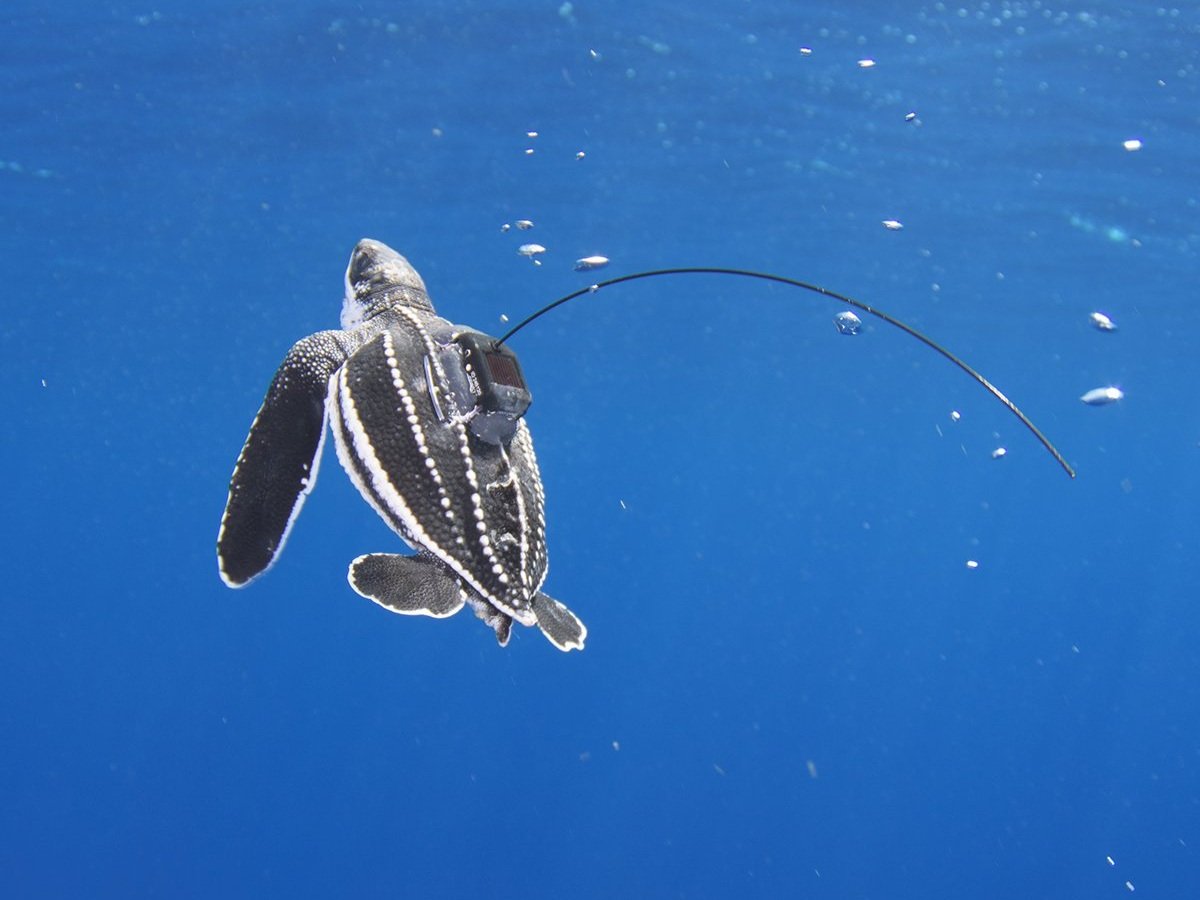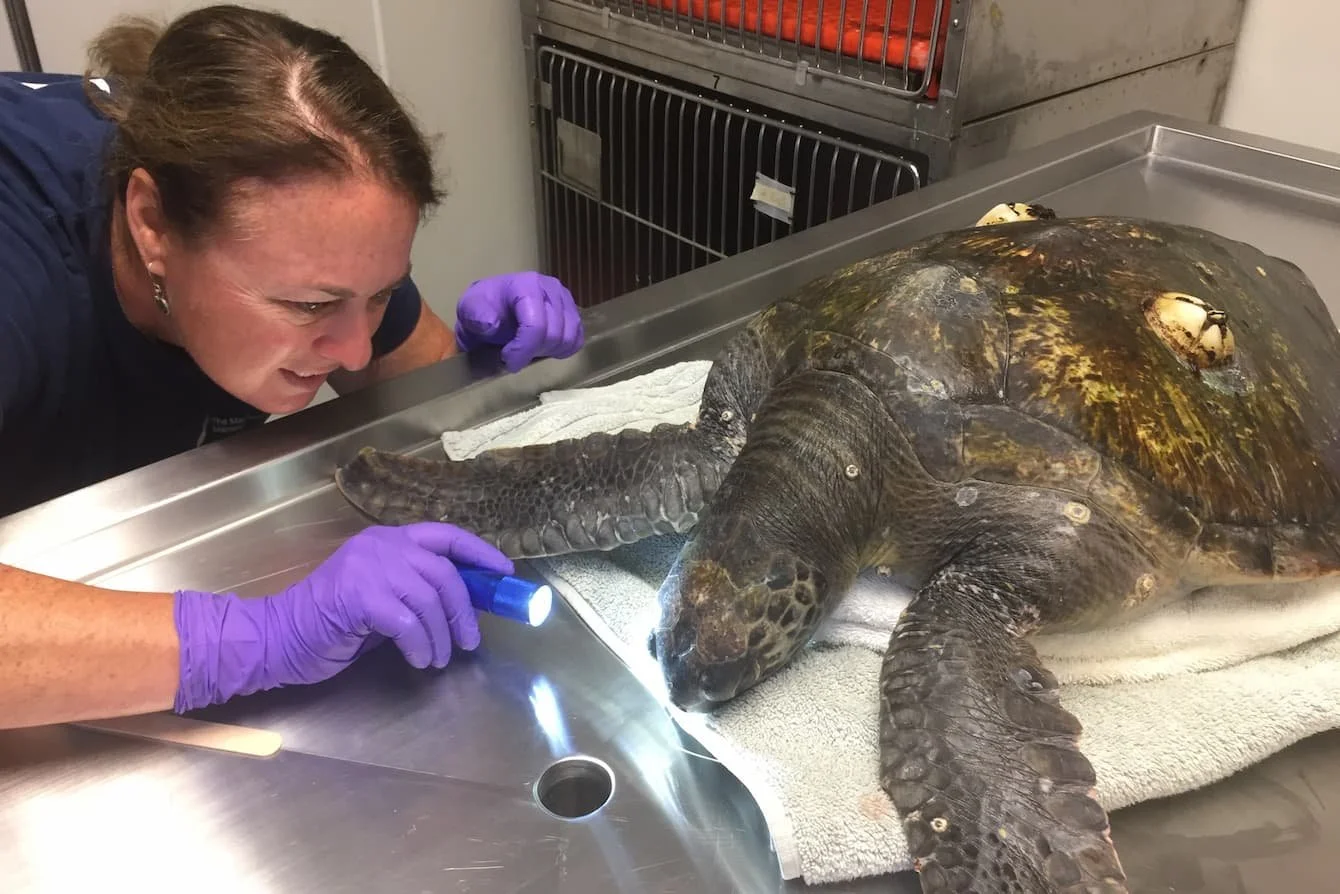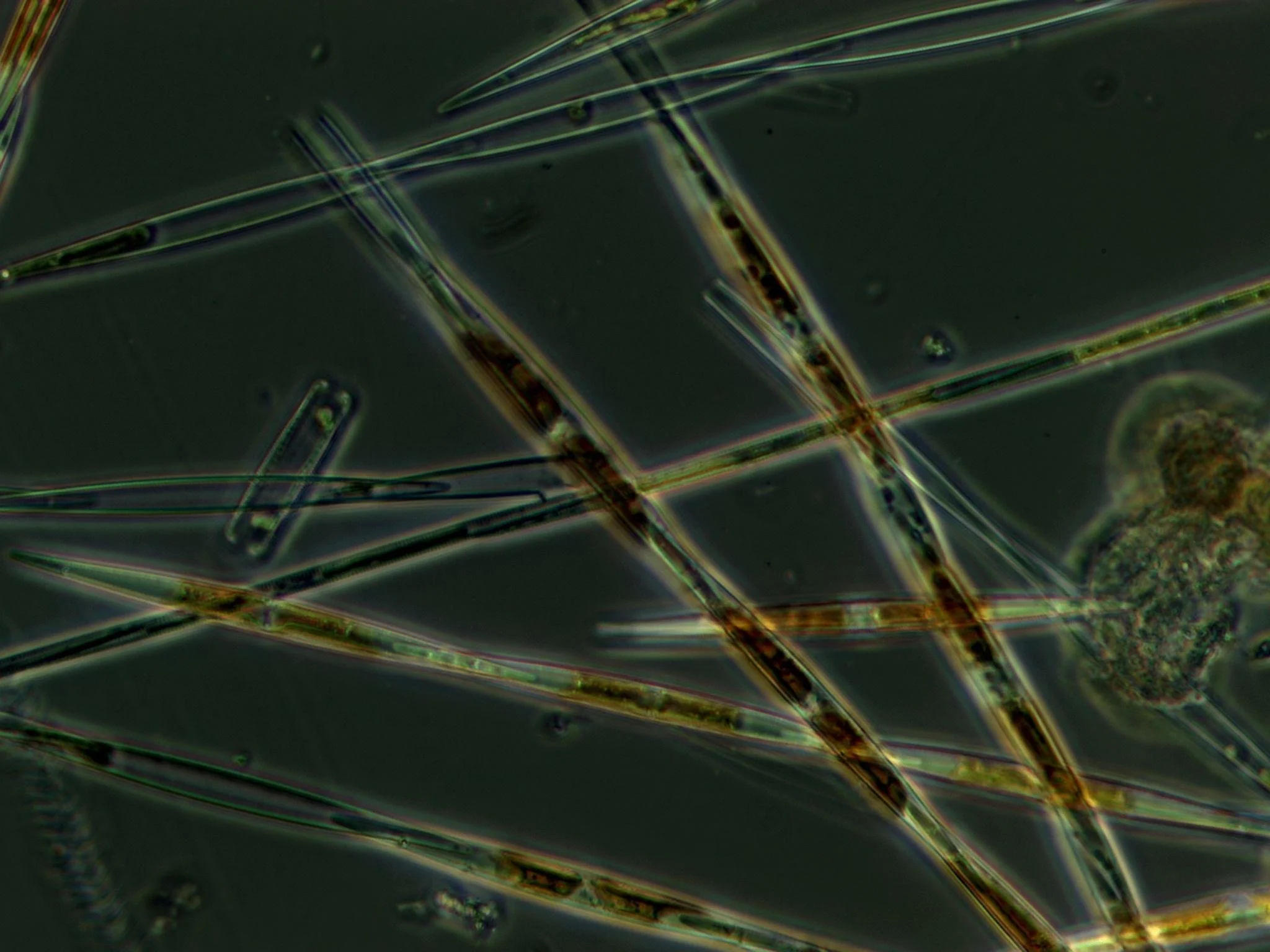The Seattle Aquarium presented Upwell Wildlife Veterinarian Dr. Heather Harris with their 2025 Conservation Research Award for her conservation work and innovative research protecting sea turtles. Since 2004, this award has honored individuals who are leaders and innovators in marine conservation research by recognizing them for their dedication to advancing our knowledge of ocean and coastal health, as well as inspiring others to become ocean advocates and the next generation of conservation researchers.
Beyond the Reef: Tagging Juvenile Hawksbills in the Caribbean
Much of the current telemetry data collected by tagging hawksbills is from adult females, due to the fact that they are easiest to tag when they crawl up the beaches to nest. To expand our knowledge of small juvenile hawksbill movements, Upwell teamed up with ProTECTOR, Inc., an organization with the goal of advancing our understanding of sea turtle biology and ecology through research throughout the coasts of Honduras. In early July the collaborative team tagged eight juvenile hawksbills with micro-satellite tags. The turtles were then released just off of the northeast reef of the Bay Islands, with some making impressive journeys.
Can We All Agree to Protect the Ocean?
One of the biggest challenges in protecting sea turtles is that they are constantly on the move. All sea turtle species make migrations (big or small) from their nesting grounds to foraging areas, requiring coordinated conservation efforts between all territories that they cross through. For example, the USA, Canada, Mexico, Japan, and Russia participate in the Migratory Bird Treaty Act to protect the bird species that travel regularly across their borders. But what happens when the area that needs protecting doesn’t belong to any country?
New Record: 1-Year of Tag Transmission!
Meet the Turtles Tagged in France
At the end of June, Upwell Executive Director Dr. George Shillinger joined our Aquarium La Rochelle collaborators to tag and release 9 rehabilitated juvenile turtles. So far, about half of the turtles have left the bay swimming slightly northward, while the other half are taking their time. You can read more about each of the turtles, like where they were rescued and what care they received before their journey back into the ocean in the info cards made by the Aquarium below.
What Are Harmful Algal Blooms and How do They Impact Sea Turtles?
While the effects of HABs on marine mammals have been well documented, much less is known about their potential impact on sea turtles. Under the mentorship of Upwell Wildlife Veterinarian Dr. Heather Harris, Cal Poly veterinary student Brenna Eikenbary is investigating the likelihood of HAB exposure among sea turtles stranded along the West Coast since 1990.
Loggerheads in the Bay of Biscay and Beyond
Last year in July, we deployed 10 micro-satellite tags on juvenile loggerheads in partnership with the Aquarium La Rochelle in France. Of this cohort, all of which are named after European scientists, the tags on turtles Archimede, Nicolas Copernic and Charles Darwin have continued to transmit for an astounding 312 days and counting (a new record)! As we prepare to release another set of turtles, we wanted to take a moment to reflect on some of the observations from this first deployment, and how they help us to take the next steps in our research.
UN-Backed Global Research Movement Shows Benefits of Tracking Ocean Giants for Marine Conservation
Why do we tag turtles? Upwell contributed our sea turtle telemetry data and expertise to the global UN-endorsed research project, MegaMove, which involves almost 400 scientists from over 50 countries in an effort to identify the most critical locations in our global oceans for better marine conservation efforts. The research found that the targets of the current BBNJ Treaty - signed by 115 countries but still to be ratified – is a step in the right direction and will be key to assist conservation but insufficient to cover all critical areas used by threatened marine megafauna, suggesting that additional threat mitigation measures are also needed.
Reflecting on the Sea Turtles in the Retroflection
Six months ago, Upwell and Two Oceans Aquarium deployed micro-satellite tags on 12 loggerhead turtles rehabilitated at the Turtle Conservation Centre. We watched their progress with many questions and hypotheses. While it will take far longer than six months to answer any of these questions fully, we made some fascinating observations that allow us to ask even more questions!













